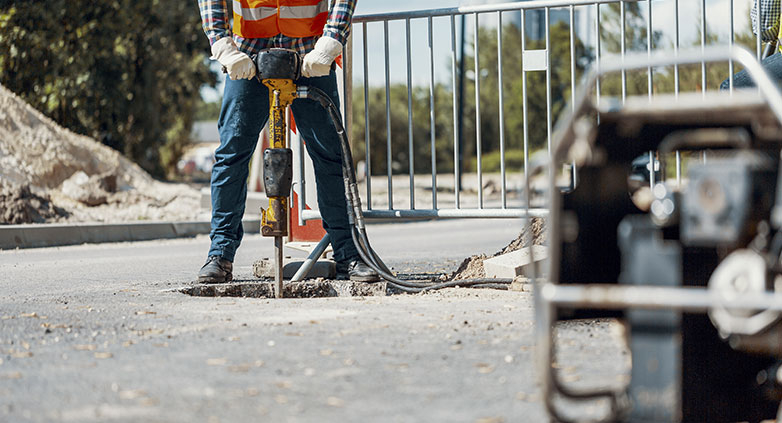Asphalt Alligator Crack Repair – Causes, Steps and Costs
Alligator cracks in asphalt surfaces are a major concern, threatening the durability and aesthetics of driveways and roads.
Asphalt alligator crack repair involves addressing the web-like surface damage typical in aged or stressed asphalt. For minor issues, a DIY approach with crack filler products can be effective. However, extensive damage often requires professional intervention, including removing the affected area and addressing underlying issues for a lasting solution. Timely repair is crucial to prevent the spread of damage and maintain the structural integrity of the asphalt.
Learn more about effective techniques, tools, and materials for asphalt alligator crack repair in our detailed guide, ensuring your pavement’s longevity and reliability.
What Causes Alligator Cracks in Asphalt?
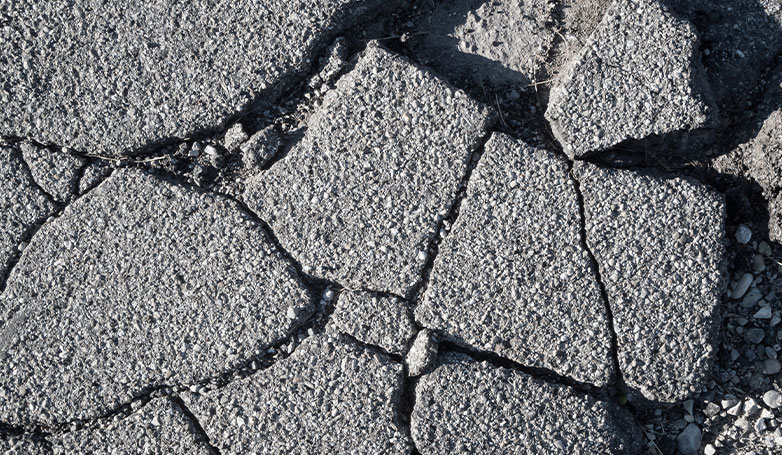
To know what causes alligator cracks in asphalt, you must understand what alligator crack is. Alligator crack is the type of damage in asphalt when the surface is cracked like the back of a gator. This is common on highways and roads but is also seen in private places. Several reasons cause asphalt alligator crack, and here are some of them:
Driving Heavy Vehicles On The Road Before It Is Cured
While it takes about two to three days for asphalt to dry, curing it is a different matter entirely. Experts agree that it takes between six to twelve months for asphalt to cure fully. The difference between dried asphalt and cured asphalt is basically in the firmness. When an asphalt pavement dries, it becomes suitable to drive on. However, the surface is not yet strong enough to withstand heavy loads.
A cured asphalt, on the other hand, is solid and ready to withstand the weight. It takes between six to twelve months to achieve this status. Therefore, it is vital that you take proper care when using your asphalt pavement within the first year.
For private spaces, it’s recommended not to park in the same spot daily. If it is a public road, you can put a notice for drivers to slow down when they reach the path. If there is another way, you can divert heavy-duty trucks to take that.
Leaving Some Cracks Untreated
Once you start noticing small cracks in your asphalt pavement, make moves to fix it immediately. Leaving those small cracks for a long time will expand the cracks and make them more challenging to deal with. Asphalt alligator crack repair does not come cheap, especially if it is left for too long.
Inadequate Pavement Thickness
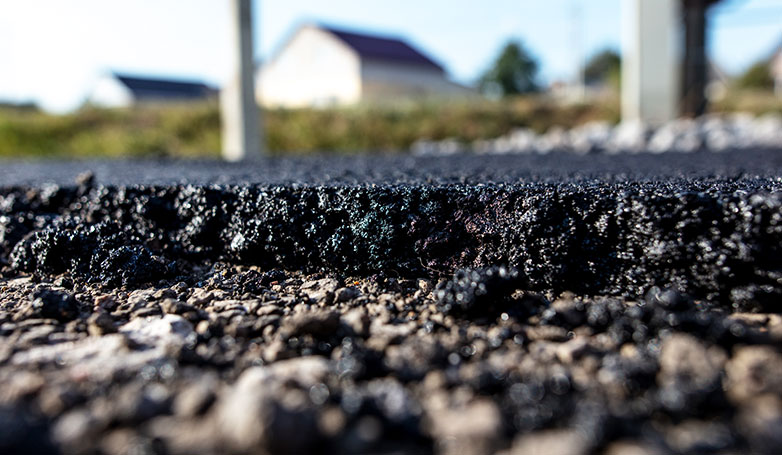
Many reasons determine the quality of asphalt pavement. One of those reasons is the thickness of the asphalt. When the asphalt is spread too thin, it becomes easy to develop problems. Such problems include depression, unraveling, alligator cracks, and so on. Alligator cracks often occur when the asphalt isn’t durable. This is because it is unable to withstand weather conditions and heavy loads.
Leaving The Asphalt Pavement Uncared For
Asphalt is known to last a long time, usually between 20 to 30 years. If the pavement receives adequate care, it will increase its lifespan. The maintenance of asphalt pavement requires preventing snow and ice from accumulating.
Whenever it snows, use a shovel to lightly scrape the snow without putting too much strain on the asphalt. This simple practice helps preserve the integrity of the surface. Another crucial aspect of asphalt care involves addressing common issues like cracks, commonly referred to as “alligator cracks.” Regular inspection and timely asphalt alligator crack repair are essential to prevent these cracks from worsening over time.
Other ways to care for asphalt include removing plants from the surface and applying sealants occasionally. This comprehensive approach ensures the longevity and durability of your asphalt pavement.
Weakened Sub-grade
A weak base course or subgrade is one of the most common causes of asphalt alligator crack. When the base is weak, it caves in under the pressure of heavy load and weather changes.
To put it in context, installing an asphalt pavement is like building a pyramid. When there is a problem with the base, it affects the surface. This results in issues such as alligator cracks.
The International Union of Laboratories and Experts in Construction Materials, Systems and Structures opines that the primary cause of alligator crack is the weakness in the sub-base. This weakness is emphasized when the weight on the asphalt is unevenly distributed. The weight near cars’ wheels tends to make indentures in the asphalt, especially before it is cured.
Read more: Infrared Asphalt Repair
Cold Weather Conditions
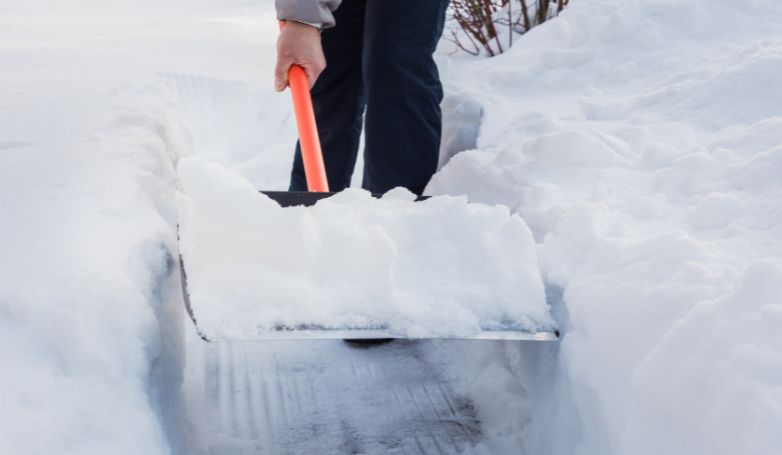
Before installing asphalt, you should know the number one enemy of asphalt. It is none other than cold weather and all its attendant occurrences. During the cold weather, asphalt pavements suffer more damage than during other seasons.
It is also more challenging to care for asphalt during the cold seasons. This is why asphalt pavements in cold territories tend to crack more often. Cold weather phenomenons such as snow, ice, and water seep into the asphalt cause cracks.
Improper Installation
Most of the problems with asphalt pavements come from mistakes made during installation. Installing asphalt may look simple at first, but it is not always so. A lot of people take the do-it-yourself way and install their asphalt by themselves. This is especially the situation if it is in a private space such as driveways.
However, a mistake in laying the sub-base may result in cracks later in the future. This way, it may be better to hire a paving company when you need a space paved.
A Combination Of Several Factors
Any of the factors listed above may cause alligator cracks. However, there are times when several of these factors come together to result in a crack. When this happens, it becomes very urgent to get the crack treated. This is also why it is crucial to take proper care of your asphalt pavement. You should constantly be on the lookout for the above-listed causes.
10 Steps to Asphalt Alligator Crack Repair
To fix asphalt alligator cracks effectively, follow these 10 steps. This guide covers everything, from safety precautions to regular upkeep, ensuring a lasting and attractive repair. Dive in to revitalize your pavement for durability and visual appeal.
1. Safety
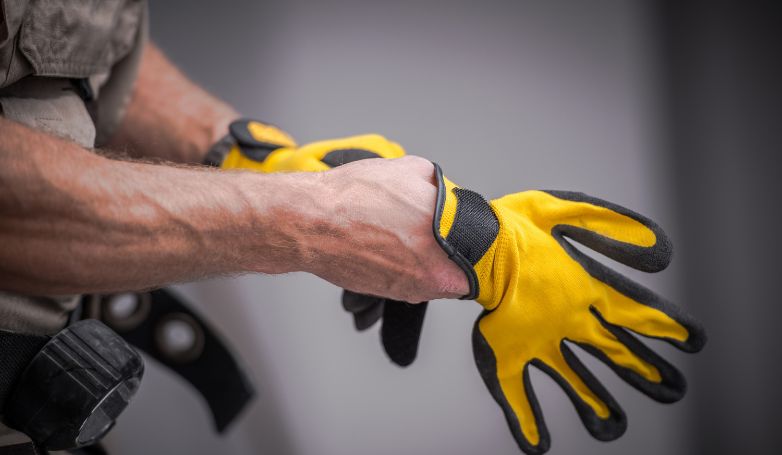
Before beginning asphalt alligator crack repair, prioritize safety. Wear protective gear like gloves, goggles, and appropriate footwear. Set up warning signs or barriers around the work area to alert passersby. Safety also involves preparing the right tools and equipment, ensuring they are in good condition to prevent accidents or injuries during the repair process.
2. Area Cleaning
Start by thoroughly cleaning the area. Remove all loose debris, dirt, and vegetation from the cracks and surrounding asphalt surface. A power washer or a stiff-bristled broom can be effective in clearing out tough grime. Ensuring the area is clean is crucial for the bonding agents and fillers to adhere properly, leading to a more durable and lasting repair.
3. Subbase Inspection
Carefully inspect the subbase under the cracked asphalt. It’s essential to determine if the damage extends beneath the surface. If the subbase is compromised, it may require additional repair or reinforcement. Addressing subbase issues is vital to prevent future alligator cracking and to maintain the structural integrity of the pavement.
4. Cutting and Removing Damaged Asphalt
Use an asphalt saw or a chisel to cut around the damaged area. This step involves removing the affected asphalt carefully to prepare for the new fill. Ensure the cuts are deep enough to remove all the weakened asphalt, but avoid causing unnecessary damage to the surrounding good pavement.
5. Removal of Residual Debris
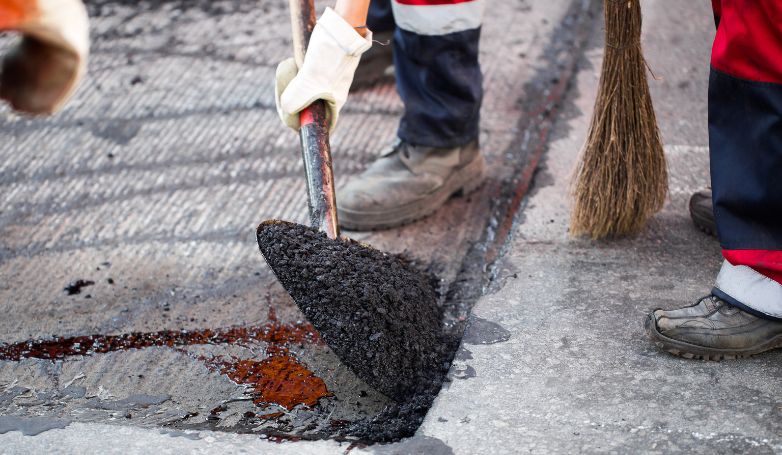
After cutting, remove all the residual debris from the area. This might involve using a vacuum or blower to clear out fine particles that could hinder the adhesion of new materials. A clean, debris-free surface is essential for the proper application of repair materials, especially when addressing issues like alligator cracks in asphalt. This meticulous cleanup ensures a smooth, even finish and contributes to the effectiveness of asphalt alligator crack repair efforts, ultimately enhancing the longevity and appearance of the pavement.
6. Application of Bonding Agent
Apply a high-quality bonding agent to the clean, exposed surfaces. This agent acts as a glue between the old and new asphalt, ensuring a strong bond and preventing future separation. Make sure to cover all surfaces evenly and allow the agent to become tacky before proceeding to the next step.
7. Filling the Cracks
Fill the prepared cracks with an asphalt patching compound. The compound should be specifically designed for alligator crack repairs, offering flexibility and durability. Tamp down the compound thoroughly to remove air pockets, ensuring a compact and level fill that closely matches the existing asphalt surface.
8. Compacting the Filler
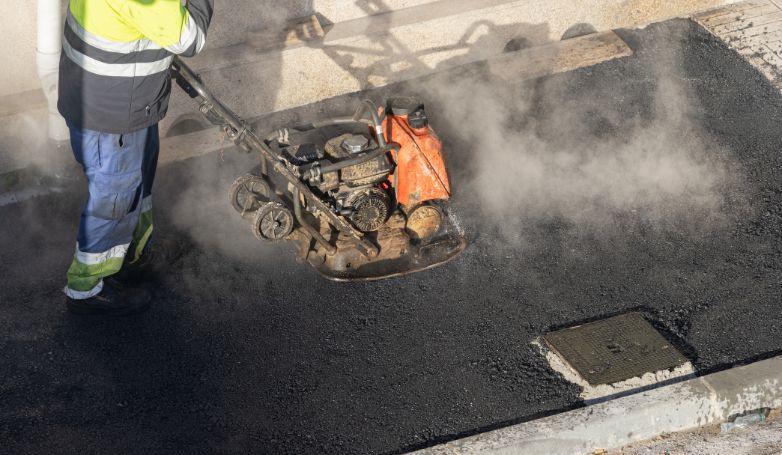
Compact the filler material using a tamper or a vibrating plate compactor. This step is crucial to ensure the filler material is densely packed and properly adheres to the existing asphalt. A well-compacted repair area will be more resistant to traffic and weather, extending the life of the repair.
9. Surface Sealing
Once the filler is compacted and cured, apply a sealant over the repaired area. This sealant protects the new repair from water infiltration, UV rays, and other environmental factors. It also helps to blend the repair with the surrounding asphalt, giving a uniform and aesthetically pleasing finish.
10. Routine Maintenance
After completing the repair, it’s important to establish a routine maintenance plan. Regularly inspect the repaired area and surrounding asphalt for any signs of wear or damage. Promptly addressing small issues will prevent them from escalating into more significant problems, ensuring the longevity of your asphalt pavement.
Why You Should Get Asphalt Alligator Crack Repaired
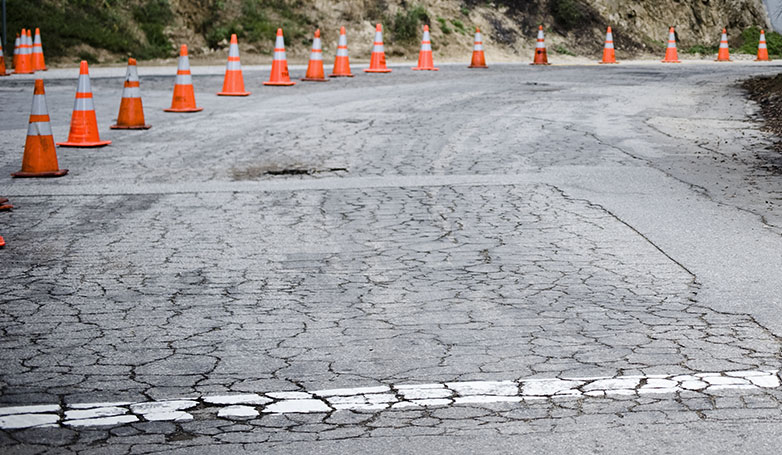
It is advisable to have asphalt alligator cracks repaired as soon as possible. This is because leaving the damage untended can lead to several mishaps. Here are some reasons you should get asphalt alligator crack repaired swiftly:
Dangerous For Cars
Here is the most obvious. When you leave alligator cracks unrepaired, it endangers the cars driving on it. Cars and their drivers can suffer damages while going on cracked asphalt. It also damages vehicles, and the damage may accumulate over time and cause accidents and loss of properties.
It Puts People At Risk
Alligator crack on asphalt is not only dangerous to cars but also pedestrians. People walking over a cracked pavement may trip and sustain injuries. In addition, if the asphalt pavement happens to be in a business environment, it may lead to financial loss.
It Worsens Over Time
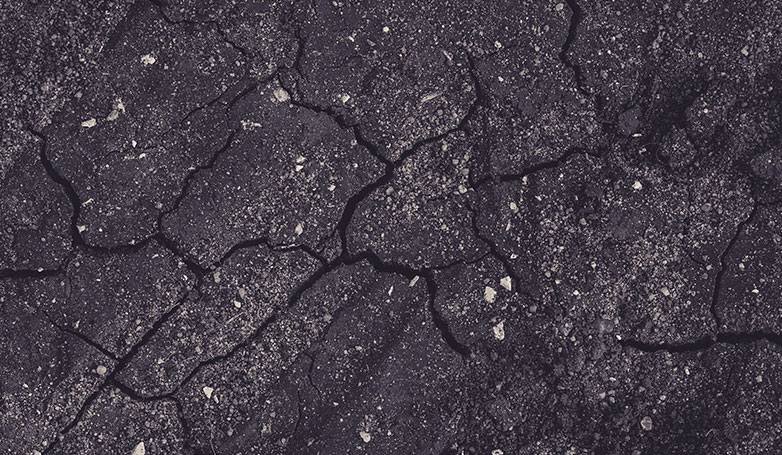
When asphalt alligator crack is left untreated for a long time, it worsens. What started as cracks may degenerate into potholes or worse. It is no brainer that potholes are more dangerous than cracks. They are also more expensive to fix.
Property Aesthetics
Unaddressed cracks in asphalt can significantly detract from the overall appearance of the pavement, negatively impacting the aesthetics of the surrounding area. This not only affects the visual appeal of the property but also diminishes the perceived value of the entire space.
Preventing Costly Repairs
Timely repair of alligator cracks is essential in preventing more extensive and expensive damage to the pavement. Addressing these issues promptly can save money in the long run, as neglecting them may lead to structural deterioration, necessitating more substantial repairs and reconstruction.
Cost to Repair Alligator Cracks
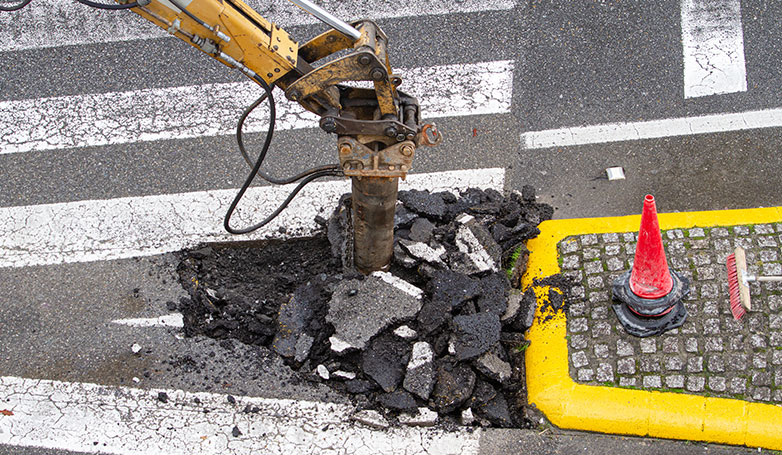
Repairing alligator cracks is not necessarily expensive. Depending on your budget and the intensity of the crack, you can fix it quickly. If you plan to repair the damage by yourself, it would not cost you much. All you have to do is buy the necessary materials and get to work.
Materials
The materials needed to repair a gator crack include:
- Alligator asphalt patch
- Asphalt sealer
- Asphalt squeegee
Labor
The cost of the repair goes up if you have to hire some labor. You may have to pay per hour for hired hands, but it will make your work faster. Hiring labor would also reduce the workload on you and allow you to work more effectively, especially when undertaking tasks like asphalt alligator crack repair.
If you are hiring a paving company, it may cost slightly more. However, the cost is justified in the quality of the work. Paving companies usually charge per square foot for their services, encompassing various aspects like asphalt repair and maintenance. It’s a good idea to inquire about specific services, including asphalt alligator crack repair, when obtaining a quote from your contractor. This ensures that you have a comprehensive understanding of the overall cost and the value you’ll receive for the investment in professional pavement care.
Prevention
Prevention is better than cure. This goes to say that it is better to prevent your asphalt pavement from getting cracks. It is undoubtedly cheaper to maintain the space before it gets cracked than to fix cracks. You can extend the lifespan of asphalt surfaces if you take proper care of them. Here are some of the ways to extend the life of asphalt surfaces.
To prevent asphalt alligator cracks, you need to care for your asphalt surface properly. This is especially important during cold weather. The cold weather can significantly damage asphalt pavements, and you must be on alert. It is also more difficult to repair asphalt during cold weather. Therefore, you should try to know more about repairing asphalt in cold weather.
Even if you have experienced asphalt alligator cracks, you can prevent it from happening again. You can do this by applying a sealant to your asphalt pavement occasionally. You can seal your asphalt every two to three years.
What is the best product for alligator cracks in asphalt?
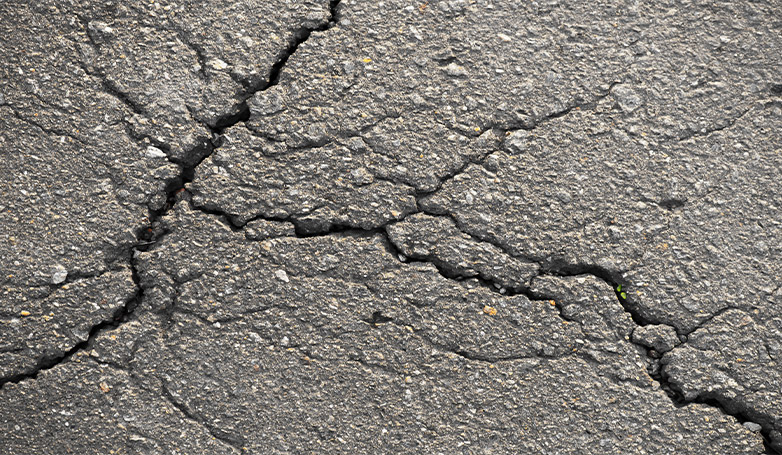
The choice of the best product for repairing alligator cracks in asphalt depends on the severity of the damage and the specific conditions of the pavement. However, a commonly recommended solution is the use of asphalt emulsion crack fillers or sealants. These products are designed to effectively fill and seal small to moderately sized cracks, preventing water penetration and further deterioration.
For more extensive damage, professional-grade hot-applied crack fillers, asphalt patching compounds, or asphalt resurfacing may be necessary. It’s crucial to consult with a pavement professional or supplier to determine the most suitable product for your specific situation, considering factors like climate, traffic load, and the overall condition of the pavement.
Paving Companies Around
If you are looking to hire experts to pave your driveway or fix alligator cracks, look no further. There is a list of paving companies in our directory to help you. Our directory contains paving companies from every state in the country. Next, you can look through the websites of the ones closest to you. After that, all you have to do is sit back and let the experts do their job.
Conclusion
By now, you must have seen that asphalt alligator crack repair is no rocket science. Once you know the cause and intensity of the crack, the rest is simple. Fix the crack either by yourself or hire a paving company.
Also, fix alligator cracks before they expand to prevent them from worsening. You may save costs if you know how to maintain the asphalt pavement so it may last. You should also take preventive measures where necessary.

